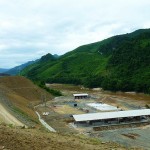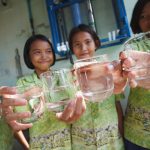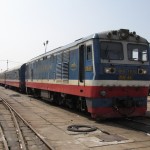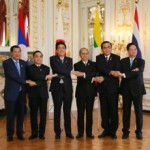Land

The most prosperous country in the Mekong region, Thailand also has the longest-standing land policy and practices, including an uninterrupted tradition of private land ownership. The Land Code Promulgating Act was issued in 1954 and was most recently amended in 2008.1 This legal framework has ...
Sustainable Development Goals

In September 2015, United Nations member states adopted the 2030 Agenda for Sustainable Development. The Agenda, to be achieved within 15 years, comprises 17 Sustainable Development Goals (SDGs) with 169 specific targets and 230 indicators for measurement.101 The SDGs stress the importance of balancing the ...
Ground water

When water seeps into the earth after a rain or flood it fills the spaces between the rocks and soil particles providing moisture for plants and percolating into larger spaces called aquifers. Groundwater naturally flows to the surface again as springs and wetlands. ...
SDG 14 Life below water
SDG 14 aims to “Conserve and sustainably use the oceans, seas and marine resources for sustainable development”155 and covers a wide range of human interactions with the oceans. In July 2017, the UN confirmed its strong commitment to implement SDG 14 by adopting a universal ...
Economy and commerce

The economies of the five Lower Mekong countries range from those still developing beyond a reliance on agriculture and natural resources, to more robust export economies supporting themselves and becoming more independent. For the 2015 fiscal year, the World Bank categorized the region’s economies as ...
SDG 7 Affordable and clean energy
SDG 7 – “Ensure access to affordable, reliable, sustainable and modern energy for all” – has a monitoring framework with five targets and six indicators. These will be used to monitor progress toward achieving global sustainable energy access as part of the 2030 Agenda. ...
SDG 11 Sustainable cities and communities
SDG 11 – “Make cities and human settlements inclusive, safe, resilient and sustainable” – is made up of 10 targets and 15 indicators. It covers aspects of safe and accessible urban spaces and services such as housing (SDG 11.1), transport (SDG 11.2) and green spaces ...
The Mekong

The Mekong River, and its associated basin, are the mainstay of the region’s rice and fish economy, as well as providing water for domestic, municipal and industrial use. Approximately 4350 km in length and originating high in the Tibetan plateau, it passes through six countries: ...
Hydropower dams

With its vast, complex network of tributaries, the Mekong river system has been identified as a valuable source of hydroelectricity generation from as early as the 1960s. Today, the Lower Mekong Basin is a key site for large-scale hydropower dam development,1 and it is estimated ...
SEZs, Infrastructure Development, and Official Development Aid

Infrastructure Connects SEZs SEZs need infrastructure to connect with neighbouring countries, improve quality of life, and promote trade and investment.4 Both soft and hard infrastructure is needed. Soft infrastructure includes institutional components such as education, healthcare and human capital, whereas hard infrastructure is the physical ones such ...
Climate change

The last 35 years have seen significant warming of the earth’s atmosphere. This is closely linked to human activity, in particular an increase in the industrial emission of greenhouse gases such as carbon dioxide and methane. Climate change has already resulted in an increased intensity ...
Water governance

Because of the transborder nature of water ecosystems, a regional approach to water governance and the management of water resources is fundamental to both sustainable development and the assurance of water rights. Hydrobasins in the Lower Mekong. View the full map in Map Explorer.This need ...
Forest policy and administration

In the Greater Mekong Subregion there are a broad range of stakeholder perpectives and relationships that contribute to how forests are managed. In these nations, forests have diverse values to groups ranging from small landholders, large concessions holders, governments, the private sector and civil society. Illegal logging in ...
SDG 6 Clean water and sanitation

Sustainable Development Goal 6 aims to “ensure availability and sustainable management of water and sanitation for all,” a goal which presents a significant challenge for any country to reach (with 40% of people globally impacted by water scarcity), including Thailand.66,67 Progress towards SDG 6 is ...
Infrastructure

Adding to and upgrading the Mekong region's infrastructure has been given a high priority by governments, development partners and regional banks. The shortfall in the estimated amount that needs to be spent by 2020 is being addressed by several new initiatives and strategies in the ...
SDG 6 Clean water and sanitation
SDG 6 – “Ensure availability and sustainable management of water and sanitation for all” – has a monitoring framework with eight targets and 11 indicators. These will be used to drive action towards achieving universal access to safely and appropriately managed water resources as part ...
Case Study: Chiang Khong Special Economic Zone

Chiang Khong SEZ is a district of the Chiang Rai SEZ, all of which is located about 785 km north of Bangkok.166 This SEZ was developed here, a logistical business center for trade, to make it easier for goods to flow from China to Laos.167 It was ...
Government

The governments of the Lower Mekong region face challenges rising from their individual histories and from shared challenges facing developing Southeast Asian economies. To varying degrees, they have been shaped by colonialism and war. Their current constitutions differ, as do the structures of their governments ...
Water resources

Introduction Water is the lifeblood of the Lower Mekong Countries. With economies and cultures inextricably connected to the Mekong River, built as they are on the production and consumption of rice and fish, people living in the Mekong countries are highly sensitive to changes in water. ...



